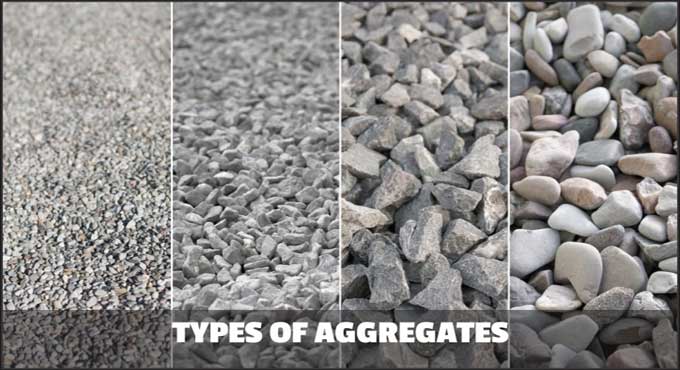NEWS | SOFTWARE | SHEET
Types of Aggregates used in Construction & their overview
The term aggregate refers to coarse to medium grain materials used in landscaping. Gravel, crushed stone, sand, and fill are the most common types of aggregate used in landscaping. Each type of stone can be used for a different purpose when it comes to landscaping projects because the material and size of the stone differ.
Binding material refers to aggregate that has been mixed with cement or binding materials, while unbound material refers to aggregate that is not mixed with cement or binding materials.
Particulate aggregates consist of a collection of particles with sizes ranging from 0.1 millimeters to 50 millimeters in size. As part of this group of materials, gravel, crushed rock, sand, recycled concrete, slag, and synthetic aggregate are included.
Concrete and mortar are both made from aggregates, such as sand, gravel, crushed stone, hydraulic cement concrete, and iron blast furnace slag. It is possible to divide aggregates into two types: fine aggregates and coarse aggregates. Depending on their size, these types are further divided into many categories. Concrete and other applications use Sieve Analysis to grade aggregate.
Geographic Location & Origin of Aggregate
Crushing naturally occurring rocks is one of the most common methods of obtaining aggregates. It is important to keep in mind that the properties of aggregates depend on the parent rock, which is usually igneous, sedimentary, or metamorphic.
A variety of tests are carried out on aggregates in order to determine their suitability for a variety of purposes. To evaluate the suitability of rock samples, it is also necessary to consider the mineralogy, grain size, texture, and petro graphic description of the samples.
Types of Aggregate
Coarse Aggregate
A sieve with an opening of 4.75 mm will not pass coarse grained aggregates. Particles that primarily pass through the 4.75 mm sieve and the 3 inch screen are said to be coarse aggregates. An economical mix requires coarse aggregates. The surface area of larger pieces is less than that of an equivalent volume of smaller pieces.
The use of the largest grain size of coarse aggregate allows for a reduction in cement and water usage. If concrete forms contain aggregates of a size larger than the maximum size that is permissible, the aggregates can interlock, forming arches or obstructions. A weakened area is formed when the area below becomes a void or is only filled with finer sand and cement particles.
Fine Aggregate
Another type of aggregate is fine aggregate, consisting of particles that pass the 9.5 mm sieve, probably pass the 4.75 mm sieve, and are largely retained on the 75 mm sieve.
The fine aggregate should have a rounded shape for increased workability and economy, as reflected in its use of less cement. In addition to filling voids in the coarse aggregate, the fine aggregate acts as a workability agent.
The properties of aggregates also affect the properties of concrete. Various aggregate sizes, grades, textures, shapes, and strengths affect the properties of concrete.
To get more details, watch the following video tutorial.
Lecturer: CE&T- Civil Engg & Technology
Applications of Aggregate
- There are several forms of aggregates that can be used in the construction of roads as the base, sub base, & surface.
- During the construction of roads and railway ballast, it is used for distributing the load and facilitating groundwater drainage.
- The volume of concrete is increased to reduce the cost of concrete. The aggregates used in the mix & the weight of PCC constitute about 60 to 75 percent of the volume and weight of concrete, respectively.
- Ensure dimensional stability.
- Make concrete durable, strong, and cheaper by influencing its hardness, abrasion resistance, and elastic modulus.
- Additionally, these materials can be used for fills, backfills, drainage, and filtration.

Image Courtesy: constructionor.com

